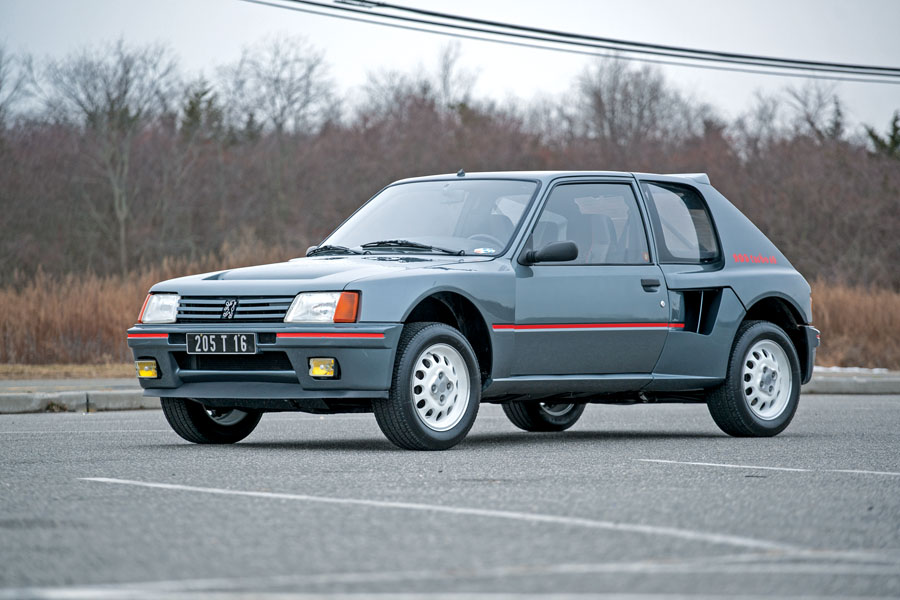Chassis Number: VF3741R76E5100189
This Peugeot remains in thoroughly original condition and now shows 48,000 km (29,825 miles) on the odometer. It wears its original gray metallic paint and its original two-tone gray leather and Alcantara interior, both of which remain in superb condition with only the most minor signs of use.
With red-edged charcoal carpet, red accents throughout, and of course, the proper 5-speed gearbox, this exceptional car both looks and performs like the racing legend it is. It is offered with its original books and spare tire, and is ready for spirited road use or for showing at local Cars & Coffee gatherings.
Always owned by enthusiasts and maintained in superb original condition, this Peugeot 205 Turbo 16 is one of the finest examples we have presented. With only 200 built, they rarely come to market, making this a likely unrepeatable opportunity to add one of the most successful racing cars of all time to the world’s finest collections.

